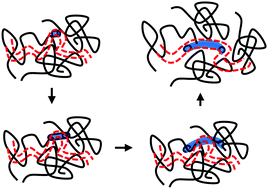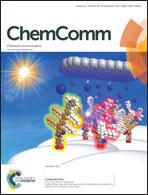The growth of filaments under macromolecular confinement using scaling theory†
Abstract
Quantitatively describing macromolecular confinement is still a challenge. Using the assembly of DNA tiles in a polyacrylamide network as a model, we studied the effect of macromolecular confinement on the growth of the filament by scaling theory. The results show that the confinement regulates the morphology, the initial growth rate v, and the eventual length of the filament Nm. The initial growth rate is dependent on the medium viscosity η as ν ∝ η−0.94, and the filament adjusts its length in the given confined space as Nm ∝ (ξ/Rg)1.8, with ξ being the mesh size of the polyacrylamide solution and Rg being the radius of gyration of polyacrylamide.


 Please wait while we load your content...
Please wait while we load your content...